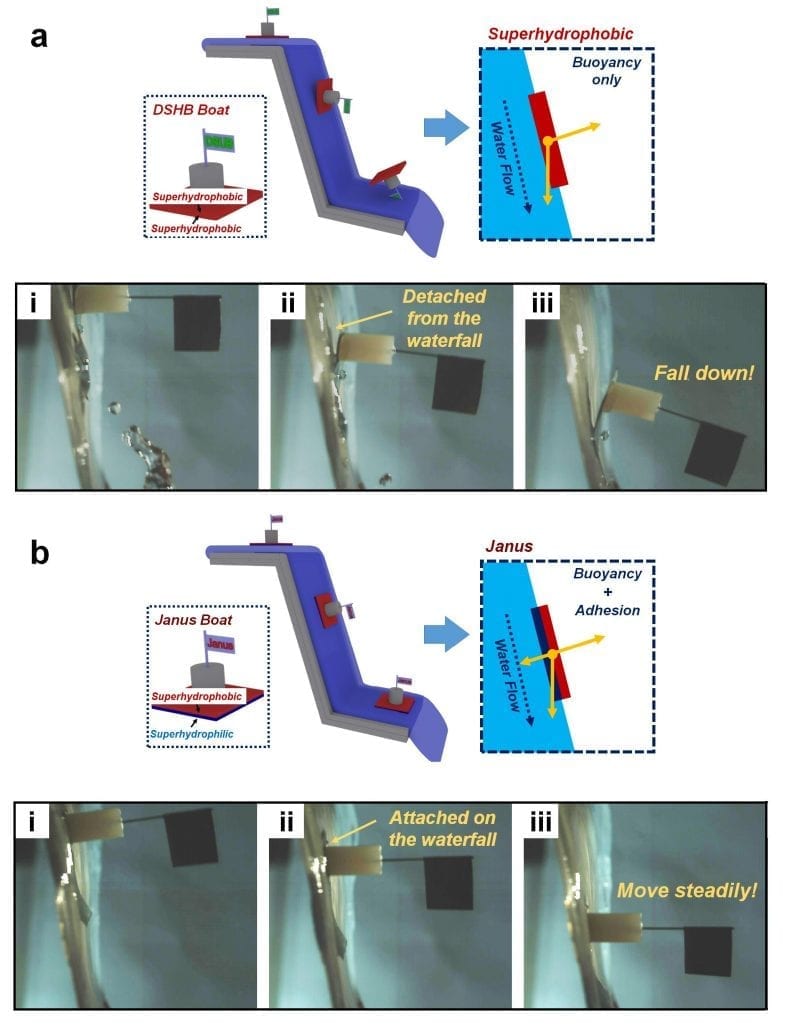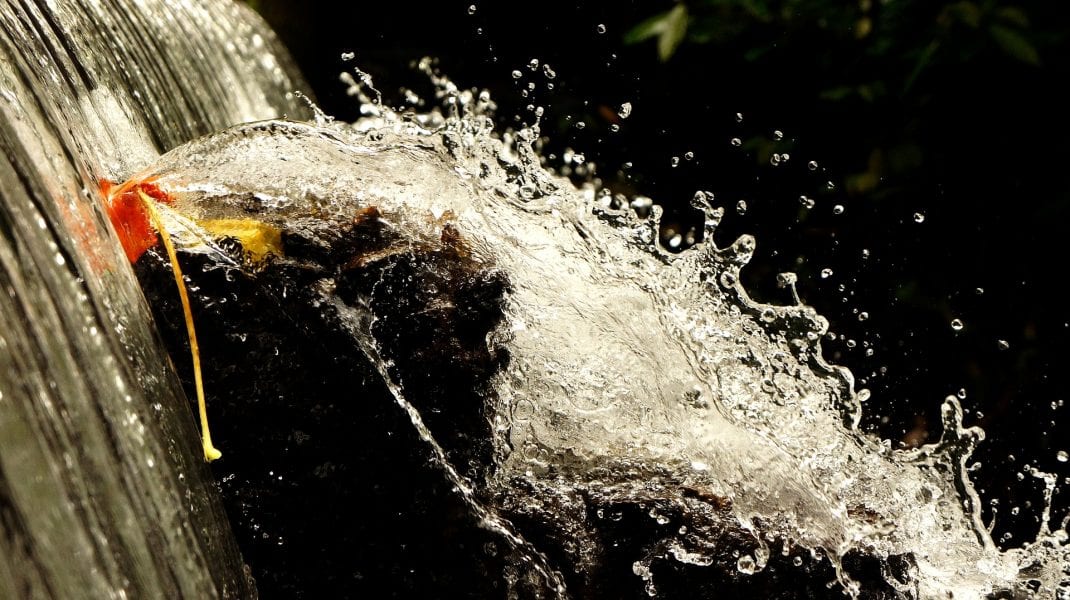 Lotus leaves as well as some kind of duckweeds exhibit an asymmetrical wettability between their two surfaces. The upper surface is superhydrophobic and the lower surface shows superhydrophilic behaviour. Superhydrophilic surfaces have a strong affinity to water, whereas superhydrophobic substrates repel water and tend to stay at the air-liquid interface. Even if a small lotus leaf floats upside down, it will quickly return to its original status in turbulent water.
Lotus leaves as well as some kind of duckweeds exhibit an asymmetrical wettability between their two surfaces. The upper surface is superhydrophobic and the lower surface shows superhydrophilic behaviour. Superhydrophilic surfaces have a strong affinity to water, whereas superhydrophobic substrates repel water and tend to stay at the air-liquid interface. Even if a small lotus leaf floats upside down, it will quickly return to its original status in turbulent water.
Superhydrophobic substrates are able to float on water surfaces because of their superior water repellency. Paradoxically, floating superhydrophobic substrates easily detach from the water surface, resulting in an undesired floating property especially under turbulent water flow.
Inspired by the binary cooperative wettability of the lotus leaf, Lei Jiang and colleagues fabricated a rigid Janus copper sheet having two different super-wettabilities, demonstrating a particularly stable floatability at multi-phase interfaces. Due to the excellent interfacial stability, the micro-boat made of a Janus sheet keeps steady even when rushing down a waterfall or navigating in turbulent water. In comparison, the micro-boat made of a double-sided superhydrophobic sheet cannot remain stable under similar conditions. This strategy to improve the interfacial stability can be applied in design of micro-sensors, floating robots, or chemical micro-reactors. Their current findings provide important information on super-wettable Janus materials and extend the scope of applications for binary cooperative material systems.

















